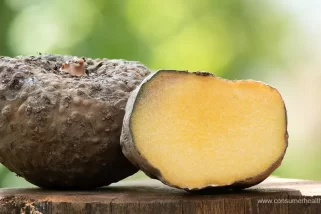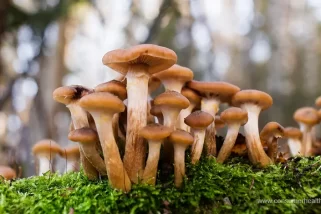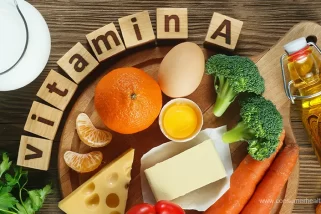In This Article
You may be familiar with pine nuts. It is the teardrop-shaped, tasty little nut that is frequently used in pesto and other cuisines. What Are Pignolias? Pine nuts, which are also known as pignoli, are edible pine tree seeds. Pine nuts have the same nutritional content as other nuts, with antioxidants and healthful monounsaturated fats. [1]

Why are pine nuts so expensive? Because of the time and effort necessary to cultivate the nuts and remove the seeds from their protective encasement, pine nuts are among the most expensive nuts on the market. Pine nuts, with their crispy texture and sweet, nutty flavor, can be eaten raw or roasted.
What Are Pine Nuts?
Pine nuts are edible seeds that come from various species of pine cones, despite their name. When consumed in moderation, pine nuts are beneficial to your health.
These tiny pine seeds are high in vitamins, minerals, and heart-healthy fats, all of which are beneficial to your health. They are heavy in fat but have very little saturated fat.
A serving of pine nuts contains a balance of healthy fats, protein, and fiber that can help keep blood sugar levels constant, aid diabetic management, and promote heart health. [2]
Where Do Pine Nuts Come From?
The pine nuts come from pine seeds. They are found in the midst of the scales of pine cones; however, while all pine trees produce pine nuts, only around 20 kinds are large enough to eat.
These nuts must be shelled after being collected from the cones and eaten as soon as possible. Because of their high oil content, unshelled pine nuts are prone to spoilage (it's best to keep them refrigerated just in case).
Pine Nuts Benefits
Nuts and seeds are a healthy supplement to almost any diet. It has a higher fat content than other nuts, which have their own set of pine nut health benefits.
1. Are Pine Nuts Good for Weight Loss? Despite their high-fat content, eating pine nuts on a daily basis (in moderation!) can help you lose weight. This is due to the presence of pinolenic acid, which has been demonstrated to be an effective appetite suppressant in recent study. [3]
2. Pine nuts can help you maintain a healthy heart. They're high in monounsaturated fatty acids. Monounsaturated fat consumption has been related to decreased levels of cholesterol and a lower risk of a heart attack. Pine nuts are also high in vitamins E and K, as well as copper, iron, and manganese, all of which are good for the heart. [4]
3. Pine nuts are high in vitamin E, which helps to slow down the aging process. Vitamin E is a potent antioxidant that protects the cell membranes of mucous membranes and skin from damaging oxygen free radicals, ensuring their integrity. [5]
4. Pine nuts consists of the antioxidant lutein, which is good for your eyes. [6]
Nutritional lutein can dramatically reduce the risk of eye illnesses like cataracts [7] and macular degeneration. Pine nuts also contain beta-carotene, another essential eye vitamin, in the form of vitamin A. [8]
5. Pine nuts contain nutrients including protein, iron, and magnesium that can help you feel more energized. They're an excellent snack to bring in the car for in-between-meal munching!
6. Pine nuts have a healthy balance of protein, lipids, and pine nuts fiber, which helps to keep blood sugar levels constant. Pine nuts provide helpful micronutrients for diabetes treatment in addition to a positive macronutrient profile. [9]
7. Pine nuts may be especially beneficial in improving brain health when used as a substitute for some of the saturated fats in your meal (for example, replacing the cheese on top of a salad or as a savory snack option instead of beef jerky).
Ways To Use Pine Nuts
Pine nuts' buttery, sweet flavor lends itself to a variety of dishes:
The most common association with pine nuts is their use in pesto sauce. Pine nuts give a mild nuttiness and rich, creamy texture when paired with fresh, spicy basil, grassy olive oil, and garlic. [10]
Because pine nuts are naturally oily, toasting them intensifies their flavor and gives them a more distinct bite. Pine nuts have a softer crunch than almonds when added in salads.
Toasted pine nuts are a terrific garnish for any spread of tasty dips or mezzes, but they may also be used to add texture to hummus or white bean dip.
Pine nuts' soft consistency and toasty, nutty flavor complement delicate, buttery tart crusts beautifully, especially when paired with a vibrant filling.
Pine nuts or pine nut oil are used to produce piñón, or pine nut-infused coffee, in the southwestern United States.
Substitute For Pine Nuts
Substitute for pine nut can be found in a variety of nuts and seeds.
- Cashews (chopped and toasted)
- Almonds (toasted).
- Pistachios
- Walnuts
- Hazelnuts
- Pecans
- Sunflower Seeds
Side Effects
Pine nut syndrome [11], commonly known as pine mouth, is a hereditary ailment that some people experience after eating pine nuts. [12]
This causes a taste that is bitter and metallic and appears two to three days after consuming pine nuts and lasts for two to four weeks in the mouth. This unpleasant side effect can only be avoided by avoiding pine nuts altogether, despite the fact that they are otherwise harmless.
Frequently Asked Question
Q: How Do I Handle Pine Nut Allergies
A: Allergies to pine nuts can range from moderate to severe, including anaphylaxis. If you're allergic to peanuts or pine pollen, you can react to pine nuts as well. Vomiting, hives and chest tightness, are all possible symptoms. If you feel you're allergic to pine nuts, consult an allergist. [13]
Q: What is the Recommended Dose for Pine Nuts
A: Pine nuts can be eaten raw or roasted. A full shot glass of pines is enough to provide you with pine nut nutrition, that will keep hunger away, and keep your belly from expanding.
Q: Are Pine Nuts Good for You?
A: Yes. When consumed in moderation, pine nuts can be beneficial to your health.
Q: Why are Pine Nuts Expensive?
A: Harvesting them takes a lot of time. The seeds are nested in pine cones and must be extracted from between the scales of the cones, making extraction time-consuming.
Q: How to Harvest Pine Nuts
A: The vast majority of pine nuts are hand-harvested. To make prying the seeds from the more closely packed cones easier, they are placed in a burlap sack and dried out in the sun for a little under a month to coax the scales out. Each cone's seeds are then manually extracted.
Shelling is the last step in the harvesting process.
You May Also Like - Chlorophyll
Final Verdict
A large number of people eat entire pine nuts. Pine nut oil is also available for purchase in the market. It can be consumed or applied to the skin as a skin supplement.
When ingested in moderation, pine nuts can supply us with a plethora of health benefits. Pine nuts are easy to find in supermarkets and health food stores, and they're great for carrying around as a snack. You can also get it in the form of an oil, which has a number of advantages.
13 Sources
We review published medical research in respected scientific journals to arrive at our conclusions about a product or health topic. This ensures the highest standard of scientific accuracy.
[1] Types of Fat: https://www.hsph.harvard.edu/nutritionsource/what-should-you-eat/fats-and-cholesterol/types-of-fat/[2] Simple Steps to Preventing Diabetes: diabetic management
[3] No da S, Zhao TT, Kim Y, Yoon MR, Lee JS, Kim IH. Preparation of highly purified pinolenic acid from pine nut oil using a combination of enzymatic esterification and urea complexation. Food Chem. 2015 Mar 1;170:386-93. doi: 10.1016/j.foodchem.2014.08.074. Epub 2014 Aug 23. PMID: 25306361.
[4] The truth about fats: the good, the bad, and the in-between:https://www.health.harvard.edu/staying-healthy/the-truth-about-fats-bad-and-good
[5] Dwivedy A, Aich P. Importance of innate mucosal immunity and the promises it holds. Int J Gen Med. 2011;4:299-311. Published 2011 Apr 12. doi:10.2147/IJGM.S17525
[6] Buscemi S, Corleo D, Di Pace F, Petroni ML, Satriano A, Marchesini G. The Effect of Lutein on Eye and Extra-Eye Health. Nutrients. 2018;10(9):1321. Published 2018 Sep 18. doi:10.3390/nu10091321
[7] Cataract: https://www.statpearls.com/ArticleLibrary/viewarticle/19005
[8] Rusu ME, Mocan A, Ferreira ICFR, Popa DS. Health Benefits of Nut Consumption in Middle-Aged and Elderly Population. Antioxidants (Basel). 2019;8(8):302. Published 2019 Aug 12. doi:10.3390/antiox8080302
[9] Kamran A, Sharifirad G, Heydari H, Sharifian E. The Effect of Theory Based Nutritional Education on Fat Intake, Weight and Blood Lipids. Electron Physician. 2016;8(12):3333-3342. Published 2016 Dec 25. doi:10.19082/3333
[10] UMass Extension Vegetable Program: https://ag.umass.edu/vegetable/fact-sheets/basil
[11] Risso DS, Howard L, VanWaes C, Drayna D. A potential trigger for pine mouth: a case of a homozygous phenylthiocarbamide taster. Nutr Res. 2015;35(12):1122-1125. doi:10.1016/j.nutres.2015.09.011
[12] Pine nuts and pine mouth: https://www.foodauthority.nsw.gov.au/about-us/science/food-risk-studies/pine-nuts-and-pine-mouth#:~:text=Eating%20pine%20nuts%20can%20occasionally,afflicted%20with%20the%20taste%20disturbance.
[13] Tupper J, Visser S. Anaphylaxis: A review and update. Can Fam Physician. 2010;56(10):1009-1011.







 This article changed my life!
This article changed my life! This article was informative.
This article was informative. I have a medical question.
I have a medical question.
 This article contains incorrect information.
This article contains incorrect information. This article doesn’t have the information I’m looking for.
This article doesn’t have the information I’m looking for.